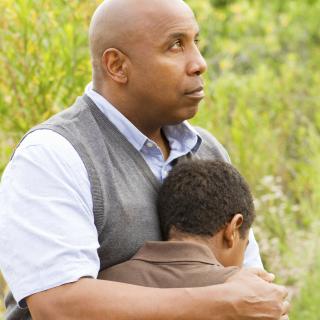Advertisement
The recent tragedy in Colorado had many of us questioning why such a terrible thing could happen. It was hard not to be drawn to the television as the story unfolded and details became available. For me, the struggle to understand was aided by watching the news and hearing the stories of the heroes who helped others or sacrificed their lives in order to save their loved ones.
It was my son who pulled me back and reminded me that media coverage of tragedies like that, while riveting for adults, can be quite frightening for children. His plaintive moan of, “Isn’t there anything else on?” reminded me that for his sake, I needed to turn off the news and focus on something other than this violence.
I settled down into a chair, my ten-year-old curled up on my lap, and we talked about the events that happened. I attempted to reassure him that this horrible event was not likely to occur in our small city and that he was safe. But in this case, reassurance was hard to offer. We go to the movies often and enjoy our time there. He could relate personally to the fact that these people wanted to have a fun experience and anticipated watching the movie, only to find themselves dying, or injured, or running for their lives. This was not a war in some faraway place that he’d never been to. This was something that could have happened to him—in a place he’d recently visited.
We can’t expect young children to understand violence as adults do, or even process it the same way. When we respond to what they are most struggling to understand, we can help the most. This usually means trying to find out as much as we can about what is bothering them, and how much they already know so we don’t end up giving them additional information that will only trouble them more. Then we can answer their questions and clear up misconceptions by following their lead.
Like most children who hear tragic news on television, my son was concerned about his own safety. At one point, he even stated emphatically that he was never going to the movie theater to watch a show again. While I don’t know if it will change his mind about going to the movies, I did reassure him that this wouldn’t happen to us because our movie theater is never crowded, and we rarely go to see a movie when it first opens. These were two things that he easily recognized were different from our usual movie-going experiences.
After our conversation, I was dismayed to discover my son had found a toy Nerf gun in his cousin’s closet and was using it to shoot foam darts at the window, making loud noises to accompany the shots. Was he emulating the gunman? I feared all sorts of terrifying thoughts in that split second as I watched him fire off that toy gun. Then I realized this was probably just his way of dealing with the news he had heard, and his need to put himself in a powerful position after feeling so vulnerable.
Feeling the need to act out the event can actually be a healthy way for children to process violence, even if it seems disturbing to parents. Encouraging them to express their fears, anxiety, or anger through art can also be cathartic—whether it’s drawing, working with some clay, or banging on a drum.
The most important thing is letting them know they have your support. And if you cannot assure that a place is safe, then perhaps you can help them to understand that when people love each other, they can keep each other safe.
